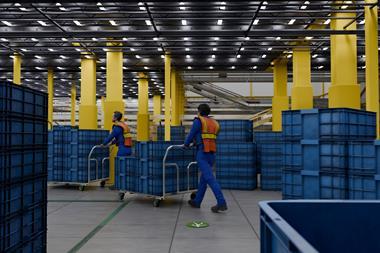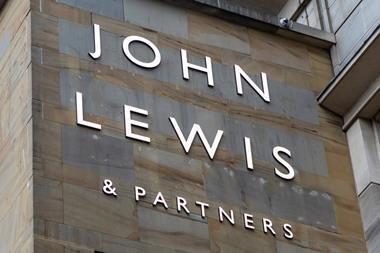Fashion and general-merchandise supply chains can be incredibly complex, characterised by seasonality, demand versus supply factors, long lead times and a greater dependency on sea freight. Having control and visibility from source to shopfloor and being able to manipulate product flow from as far back in the supply chain as possible can greatly improve sales performance. However, for the majority of retailers, doing all this from head office is impossible.
US retailers have taken advantage of consolidation activities in source countries for many years, using logistics specialists to provide value-added activities such as pressing, labelling, bagging and tagging for products destined for the US market. Large European fashion retailers have also set up similar facilities in China and Hong Kong, or have engaged big, global freight-forwarding providers, such as DHL or Kuehne & Nagel, to do so for them.
Another option becoming available to retailers is to work with end-to-end supply-chain specialists that can take care of consolidating, preparing and holding stock in the countries of origin, but also bring the product along the chain to domestic distribution centres and even into stores or to customers’ homes, if required. Two new companies doing just that, Holistica and SEKO Synergy, have emerged recently.
Holistica, a joint venture between Christian Salvesen and APL Logistics, launched two years ago. It takes advantage of Christian Salvesen’s existing transport infrastructure, dedicated warehouses and shared user networks across Europe, and APL’s international freighting and warehousing capabilities, particularly in Southeast Asia, China, India and South America.
“It’s about meeting burgeoning customer demand for a managed end-to-end solution on an international scale,” says Holistica managing director Paul Cunningham. He explains that large retailers, such as Marks & Spencer, had contracts with APL Logistics to manage clothing and general merchandise coming out of the Indian sub-continent and Turkey, heading for the UK. Meanwhile, Christian Salvesen had contracts to run significant parts of the distribution network into stores. “Now those services can be totally integrated and end-to-end, increasing efficiency and allowing for cost savings,” says Cunningham.
A major cost can be cut out of the chain when supply drops off in the months between an order being placed and goods leaving port,” he explains. “If demand changes in that time – which might be three or six months – and the UK network has enough of a clothing style, why bring it here to store it in the most expensive place in Europe?” he says. “It’s far better to store it in
a cheaper place, such as China. That way you are optimising your upstream supply chain to enhance downstream performance.”
He adds that, while retailers have sought low-cost goods in China and India because of pressure on price and margin, margin gains are only possible if the supply chain is managed very carefully. “End-to-end management is about managing the risks and reducing the costs wherever possible, so that global sourcing delivers the commercial benefits,” says Cunningham.
SEKO Synergy is a new joint venture between SEKO UK and Synergy Group Logistics, whose clients include New Look, Debenhams, Monsoon, Bay Trading, La Senza, Arcadia, Bhs, Ann Summers and Grattan. SEKO provides the global, multi-modal transport network with locations in 40 countries worldwide, while Synergy operates two modern garment-processing plants in London, handling 100,000 garments a day.
“We were aware of many medium-sized retailers and fashion brands missing out on the benefits of a bespoke, end-to-end supply chain because their logistics budgets weren’t large enough to register on the radar screens of the multinational logistics providers,” says SEKO Synergy director Dave Emerson. “The key for many of our clients now is direct-to-store fulfilment, making use of cheaper labour and storage in China. And rather than have to set up the whole infrastructure themselves, they are able to use us and turn the service on or off as required.”
This means that, if a fashion retailer’s top 20 out of 200 styles are performing at peak, they can be transported straight from the country of source into stores, bypassing the customer’s UK DC, explains Emerson. “It helps immensely that 10 per cent of its business can go a direct route, on a pay-as-you-go basis – because their distribution centres don’t have rubber walls. We tend to have quarter-by-quarter or six-monthly contracts, so clients don’t have to commit for too long – although, of course, they pay a premium for the short-term arrangement,” says Emerson.
London clothing brand Criminal, which sells through department-store concessions, used to re-process stock for stores after freight forwarding. It now uses the pre-retail services of SEKO Synergy in China. “The one-stop-shop service has helped us speed supply of top-selling lines, while freeing up the management to focus on the front-end running of the business,” says operations manager Paul Lockwood.
Verdict says price inflation will have crept back into the clothing market by 2010, owing to retailers having already secured most of the financial benefits of international sourcing, so the more closely they can shave supply-chain costs the better. The need to focus on end-to-end logistics is ever more pressing.


























No comments yet